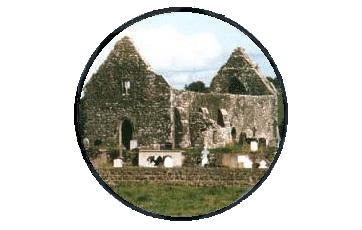Contents
Tour of Leitrim
French in Leitrim
1798
Leitrim's Historic Year
Sign Guest Book
View Guest Book
Tour of Leitrim
- Fenagh Village

The picture below is the actual village of Fenagh, a small but very hospitable place.
The Book of Fenagh
In 1516 the coarab (a coarab was the lay abbot or warden of the lands belonging to the church or monastery) of the time, Tadhg O'Rodaighe commissioned a writer Muirghis MacPhaidin O'Maolchonaire to transcribe and recast the Old Book of Caillin (written between 1350 and 1400). This work of O'Maolchonaire is the Book of Fenagh. Briefly, the book states the various promises the local chieftains made to Caillin and the blessings he bestowed on them. These promises must continue to be honoured, and tributes paid, or Caillin would withdraw his divine intercession and ill luck would befall those tribes.
The book was written completely in Irish. It was bought in 1888 by the Royal Irish Academy in Dublin. It was translated into English and published in 1875 and again in 1939. Return to previous.
[Back to French march through Leitrim]